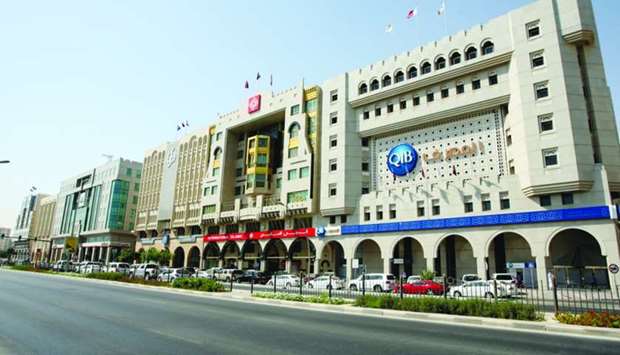The Gulf Cooperation Council's (GCC) banks' liquidity is expected to remain "adequate" in 2021-22 despite the economic shock from the pandemic and that capital buffers are sufficient to absorb the likely deterioration in asset quality, according to Fitch, an international credit rating agency.
"We expect liquidity for GCC banks to remain adequate in 2021-22 despite the economic shock from the pandemic. The pandemic has not led to deposit withdrawals by governments or government-related entities, in contrast to the oil price shock of 2014-15," Fitch said in a report.
In 2020, governments instead favoured sovereign debt issuance, with the proceeds supporting banking sector liquidity, it said, adding household savings, which grew due to limited spending opportunities during lockdowns, also supported liquidity.
Highlighting that the GCC banking sector liquidity has remained adequate during the pandemic, helped by various support measures; the rating agency said furthermore, money supply has expanded in most GCC countries during the pandemic, driven by sovereign debt issuance, growth in household savings and the absence of significant government deposit withdrawals.
Hard-currency debt issuance by the GCC sovereigns increased to $48.7bn in 2020 from $42.3bn in 2019, according to First Abu Dhabi Bank.
"We do not expect significant government deposit withdrawals in 2021-22 as the authorities’ fiscal deficit funding strategies prioritise debt issuance over asset drawdowns," Fitch said.
Estimating that the GCC banks’ capital buffers are sufficient to absorb the likely deterioration in asset quality following the end of loan moratoriums in 2021; it said the average CET1 ratio was 15.2% at end 2019 and "we expect a slight deterioration in this ratio to about 14.5% by end-2021, driven mainly by weaker profitability."
The rating agency expects slow loan growth and lower dividend pay-out ratios to limit pressure on banks’ core capital ratios.
"Our view is supported by healthy total reserve coverage of Stage 3 loans and pre-impairment profitability buffers, which provide banks with an extra cushion against deteriorating credit conditions," it said.
Fitch viewed that banks’ loan quality to be more vulnerable in the UAE than in Kuwait, Saudi Arabia and Qatar due to relatively high levels of Stage 3 loans and deferred exposures and related balances.
Qatari banks have relatively strong credit metrics owing to a high proportion of domestic government exposure and lower Stage 3 loans ratios pre-pandemic; even as they could face pressure on asset quality from weakness in the real estate and construction segments as well as from high levels of Stage 2 loans, according to the report.
"We expect liquidity for GCC banks to remain adequate in 2021-22 despite the economic shock from the pandemic. The pandemic has not led to deposit withdrawals by governments or government-related entities, in contrast to the oil price shock of 2014-15," Fitch said in a report.
In 2020, governments instead favoured sovereign debt issuance, with the proceeds supporting banking sector liquidity, it said, adding household savings, which grew due to limited spending opportunities during lockdowns, also supported liquidity.
Highlighting that the GCC banking sector liquidity has remained adequate during the pandemic, helped by various support measures; the rating agency said furthermore, money supply has expanded in most GCC countries during the pandemic, driven by sovereign debt issuance, growth in household savings and the absence of significant government deposit withdrawals.
Hard-currency debt issuance by the GCC sovereigns increased to $48.7bn in 2020 from $42.3bn in 2019, according to First Abu Dhabi Bank.
"We do not expect significant government deposit withdrawals in 2021-22 as the authorities’ fiscal deficit funding strategies prioritise debt issuance over asset drawdowns," Fitch said.
Estimating that the GCC banks’ capital buffers are sufficient to absorb the likely deterioration in asset quality following the end of loan moratoriums in 2021; it said the average CET1 ratio was 15.2% at end 2019 and "we expect a slight deterioration in this ratio to about 14.5% by end-2021, driven mainly by weaker profitability."
The rating agency expects slow loan growth and lower dividend pay-out ratios to limit pressure on banks’ core capital ratios.
"Our view is supported by healthy total reserve coverage of Stage 3 loans and pre-impairment profitability buffers, which provide banks with an extra cushion against deteriorating credit conditions," it said.
Fitch viewed that banks’ loan quality to be more vulnerable in the UAE than in Kuwait, Saudi Arabia and Qatar due to relatively high levels of Stage 3 loans and deferred exposures and related balances.
Qatari banks have relatively strong credit metrics owing to a high proportion of domestic government exposure and lower Stage 3 loans ratios pre-pandemic; even as they could face pressure on asset quality from weakness in the real estate and construction segments as well as from high levels of Stage 2 loans, according to the report.


